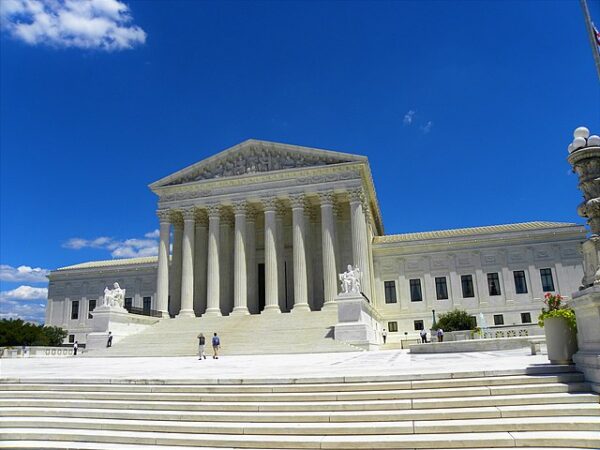In a significant legal victory for President Donald Trump, the U.S. Supreme Court has reportedly granted his emergency request to dismiss Democratic appointees from two federal boards, the National Labor Relations Board (NLRB) and the Merit Systems Protection Board (MSPB).
The ruling, issued on Thursday, allows the dismissals to remain in effect while the court considers the broader implications of the case.
The decision comes after Trump removed Gwynne Wilcox from the NLRB and Cathy Harris from the MSPB during his early days in office, a move that sparked legal challenges from both individuals.
They argued that their dismissals were unjust and violated their rights, with Wilcox having four years remaining on her term and Harris three.
The Supreme Court’s ruling, which passed with a 6-3 vote, temporarily blocks lower court orders that had mandated their reinstatement.
The court’s majority indicated that the federal government is likely to demonstrate that both the NLRB and MSPB wield significant executive power, justifying the dismissals.
However, the justices noted that a definitive ruling on whether these boards fall within a recognized exception to presidential authority would require more extensive legal briefing and argument.
The court’s filing highlighted the balance of risks involved, stating, “The Government faces greater risk of harm from an order allowing a removed officer to continue exercising the executive power than a wrongfully removed officer faces from being unable to perform her statutory duty.”
This decision underscores the court’s acknowledgment of the complexities surrounding executive authority and the functioning of federal agencies.
Following their terminations, both Wilcox and Harris initiated lawsuits against the Trump administration. U.S. District Judge Beryl Howell had previously ordered the reinstatement of Wilcox, while Judge Rudolph Contreras ruled that Harris could not be dismissed “at will.”
These lower court decisions had placed the Trump administration in a precarious legal position, prompting the appeal to the Supreme Court.
The implications of this ruling extend beyond these individual cases. It raises critical questions about the extent of a president’s power to remove appointees and the protections afforded to those serving on federal boards.
As the Supreme Court prepares for further deliberation on the matter, the outcomes could set important precedents for the relationship between executive authority and appointments made by previous administrations.
While the immediate decision is temporary, it signals a potential shift in how the courts may interpret executive power in relation to federal appointments.
Legal analysts suggest that the case could have lasting ramifications for future administrations, especially in how they manage appointees from opposing political parties.
As the legal landscape continues to evolve, this ruling is a reminder of the intricate interplay between law, politics, and governance, particularly in a climate marked by heightened partisan divisions.
The Supreme Court’s upcoming deliberations will be closely watched, as they may redefine the boundaries of executive authority in the context of federal appointments.
[READ MORE: Senate Passes New ‘No Tax on Tips’ Bill]



